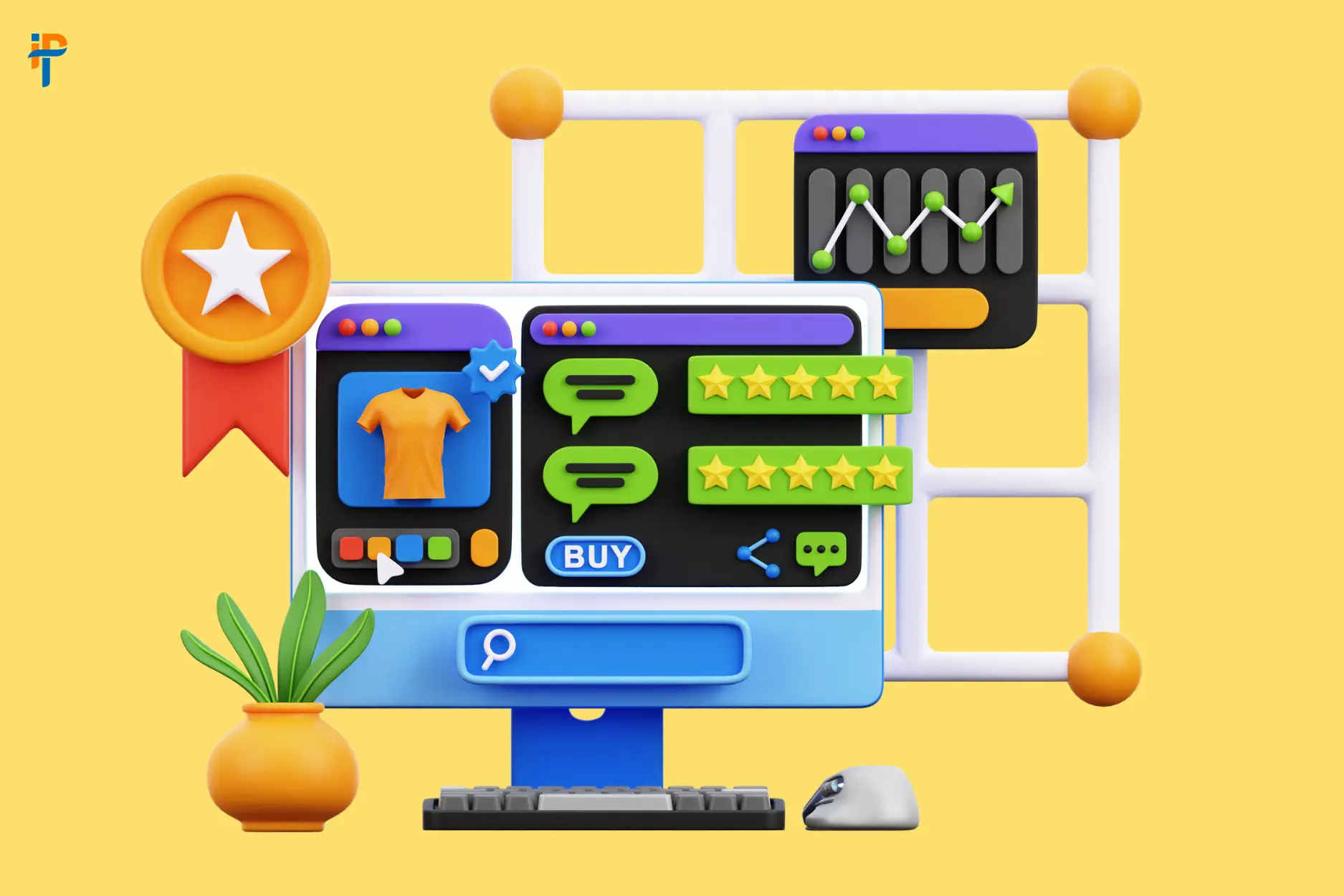How AI Recommendation Systems Are Transforming eCommerce: From Strategy to Execution
Introduction
The Rise of Personalization in eCommerce
Picture this: You walk into your favorite neighborhood store, and the shopkeeper knows exactly what you like. They remember your past purchases, your preferences, and even your size. That personal touch makes you feel valued—and that's precisely what customers expect online today.
The digital world is overcrowded, and consumers are overwhelmed with choices. The only way to cut through the noise is personalization. And when it comes to scaling that personalization across thousands or even millions of users, AI recommendation systems are your best bet.
Why AI is the Game-Changer
AI has become the secret sauce for top-performing e-commerce giants. It doesn’t just automate suggestions; it intelligently predicts what customers want, sometimes before they know it themselves. From recommending products and personalizing emails to curating homepages, AI is redefining the e-commerce experience from strategy to execution.
What is an AI Recommendation System?
Basic Concept
An AI recommendation system is a predictive technology that leverages algorithms and data to recommend the most relevant products to users. It analyzes user behavior—what they click, how long they stay, what they buy—and then suggests products that are likely to resonate.
Types of Recommendation Systems
Content-Based Filtering
This model recommends items similar to what a user has interacted with before. If you bought a black leather jacket, it might suggest other leather products or similar styles.
Pros: Personalized.
Cons: Limited discovery of new or diverse items.
Collaborative Filtering
Here, the system looks at what similar users have purchased or viewed. If people who bought product A also bought product B, you might like B too.
Pros: Great for discovering new products.
Cons: Suffers from “cold start” if there’s no user data.
Hybrid Models
These systems blend content-based and collaborative filtering to balance personalization and discovery. Most modern platforms, including Netflix and Amazon, use hybrid models for precision.
How AI Recommendation Engines Work
Data Collection and Preprocessing
Everything starts with data—tons of it. AI collects data like:
- Browsing history
- Purchase behavior
- Product views
- Search queries
- Time spent on pages
- Cart activity
The system cleans and normalizes this data to make it machine-readable. Think of it as preparing ingredients before cooking a gourmet meal.
Machine Learning Models Behind the Scenes
Popular models include:
- Decision Trees: Great for rule-based logic.
- Neural Networks: Best for deep pattern recognition.
- Matrix Factorization: Ideal for collaborative filtering.
- Reinforcement Learning: Learns over time with rewards/punishments.
Each algorithm has its own flavor and use case. Advanced systems combine multiple models for better performance.
Real-Time Personalization Mechanics
Speed matters. When a user lands on your site, the AI engine instantly begins analyzing behavior—clicks, scrolls, and dwell time—and modifies product suggestions on the fly. This real-time feedback loop keeps users engaged and boosts conversions.
Key Benefits of AI in eCommerce Recommendations
Increased Conversions and AOV
A good recommendation system acts like a skilled salesperson—it subtly nudges users toward products they’re more likely to buy. This leads to:

- Higher conversion rates
- Increased average order values
- Lower cart abandonment
Personalized Shopping Experience
A site that “gets” you keeps you coming back. Personalized recommendations are like a virtual stylist or tech guru that makes shopping effortless.
Customer Retention and Loyalty
Loyalty isn't just about points—it’s about feeling understood. When users consistently get relevant product suggestions, it creates an emotional connection with your brand.
Cross-Selling and Upselling Opportunities
AI can automatically suggest accessories, bundles, or premium versions. It’s like Amazon’s “Frequently Bought Together,” but smarter.
Real-World Use Cases of AI Recommendation Systems
Amazon’s Product Suggestions
Amazon’s recommendation engine is responsible for 35% of its total revenue. It combines purchase history, browsing behavior, and real-time data to deliver hyper-personalized suggestions.
Netflix-like Personalization in Retail
Retailers are mimicking Netflix’s content personalization for product discovery. Platforms now generate dynamic homepages tailored to individual user profiles.
Fashion and Apparel Custom Styling
Platforms like Stitch Fix use data and AI stylists to create curated outfits. It’s like having a fashion consultant, powered by AI.
Grocery and Food Delivery Services
Apps like Instacart or BigBasket use recommendation engines to suggest products based on past purchases, regional preferences, or even seasonal trends.
Must-Have Features in an AI Recommendation System
Multi-Channel Integration
Your AI system should work across all digital touchpoints—website, app, email, chatbot, and even WhatsApp.Real-Time Processing
Modern users are impatient. Recommendations need to adapt instantly based on user behavior in the moment.
Explainability and Transparency
Users and regulators alike want transparency. AI systems must be able to explain why a particular product was recommended.
Scalability and Customization
Your business grows—so should your AI. Ensure your system is flexible enough to scale with traffic and adapt to new data sources.
Strategy: Implementing AI Recommendations in Your eCommerce Store
Step 1: Understand Your Customers
Use tools like heatmaps, Google Analytics, and session recordings to know your customers inside-out. Segment them based on behavior, preferences, and lifecycle stages.
Step 2: Choose the Right Tools or Platforms
You can either build your own recommendation system (resource-heavy but customizable) or use third-party tools like:
- Dynamic Yield
- Salesforce Commerce Cloud
- Clerk.io
Step 3: Define KPIs and Success Metrics
Track performance with metrics like:
- Click-through rate (CTR)
- Conversion rate
- Revenue per visit (RPV)
- Session duration
Step 4: Test, Optimize, Repeat
Use A/B testing to compare models and placements. Regularly retrain your AI models with fresh data for optimal performance.
Tools and Platforms for AI Recommendations
Google Recommendations AI
Part of Google Cloud, this tool uses deep learning models and integrates easily with existing systems.
Dynamic Yield
Great for mid to large-scale retailers, offering personalization, A/B testing, and omnichannel integration.
Salesforce Einstein
Best for those already on Salesforce. It personalizes everything from products to emails using AI.
Clerk.io
Easy to set up for small and medium eCommerce stores. Offers plug-and-play recommendations with strong analytics.
Open-Source Alternatives
For tech-savvy teams:
- PredictionIO (Apache)
- LightFM
- Surprise (Scikit)
These offer flexibility and full control over the algorithms.
Common Challenges and How to Overcome Them
Data Privacy and GDPR Concerns
Always:
- Get user consent
- Use anonymized data
- Allow opt-outs
- Store data securely
Cold Start Problem
New users or products = no data. Solutions?
- Use category-level data
- Ask onboarding questions
- Show trending or bestsellers
Bias in Algorithms
Bias can lead to echo chambers or exclusion. Ensure diversity in training data and audit your models regularly.
Integration with Legacy Systems
Old infrastructure can bottleneck AI. Use middleware, APIs, or partner with integration-friendly platforms.
Future Trends in AI Recommendations for eCommerce
Conversational Commerce Integration
Chatbots and voice assistants like Siri or Google Assistant are beginning to offer product suggestions during natural conversations.
Visual and Voice-Based Recommendations
Platforms now allow users to upload photos or speak product names to get instant suggestions. Pinterest Lens and Google Lens are already doing this.
Emotion AI and Sentiment-Based Suggestions
Emerging AI models analyze user emotions from text or speech and recommend products accordingly—like a friend sensing your mood and suggesting chocolate.
AI Agents for Autonomous Personal Shopping
Soon, AI agents will shop for you based on your goals, budget, preferences, and past behaviors—like your own digital concierge.
Conclusion
AI-powered recommendation systems are no longer a futuristic concept—they're a must-have tool in the modern eCommerce playbook. From real-time personalization and higher conversion rates to enhanced customer loyalty and next-level product discovery, the impact of AI is undeniable.
The best part? You don’t need to be Amazon to leverage this tech. Whether you’re a startup or a seasoned retailer, implementing an AI recommendation engine can elevate your business strategy and put you miles ahead of competitors.
So, if you haven’t already, now’s the time to harness the power of AI to deliver smarter, faster, and more delightful shopping experiences.
Frequently Asked Questions
Popular options include:
- Google Recommendations AI – Great for scalability and data-driven insights
- Dynamic Yield – Ideal for enterprise-level personalization
- Salesforce Einstein – Best if you already use Salesforce
- Clerk.io – User-friendly and affordable for small to mid-size stores
- PredictionIO – A flexible, open-source option for custom solutions
Each platform caters to different business sizes and needs, so choose one that fits your tech stack and goals.
Common challenges include:
- Data privacy regulations like GDPR
- Cold start problems for new users or products
- Complex integration with legacy systems
- Bias in recommendations, which can affect fairness These issues can be addressed with the right planning, clear data policies, and by selecting tools that support ethical AI practices and compliance.

Read more blogs

Time and Cost of Developing an AI like ChatGPT: Key Factors Explored
Explore the factors influencing the time and cost of developing an AI model like ChatGPT. Understand key considerations for successful AI ap

Guide to Successful Real Estate App Development: Features, Technologies, and More
Explore the advantages of developing a real estate app, key features, technologies to employ, and the importance of collaborating with a Rea

Custom vs. Template-Based Website Development: A Comprehensive Cost Comparison Guide
Explore the costs, pros, and cons of custom website development vs. template-based solutions. Make an informed decision for your online pres
